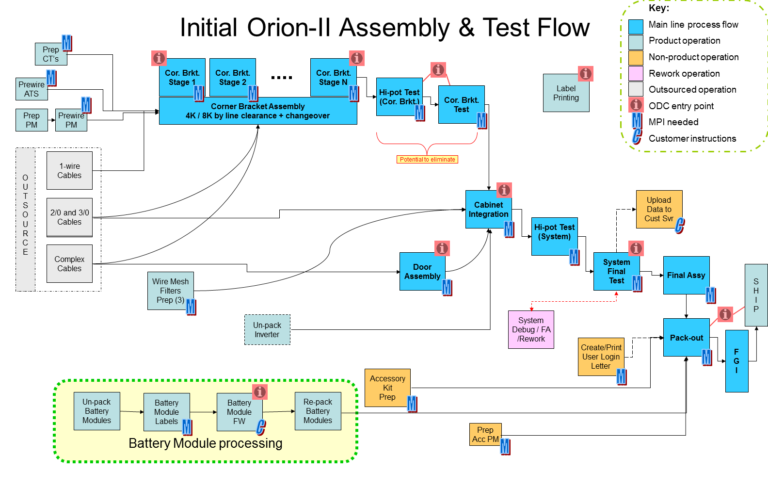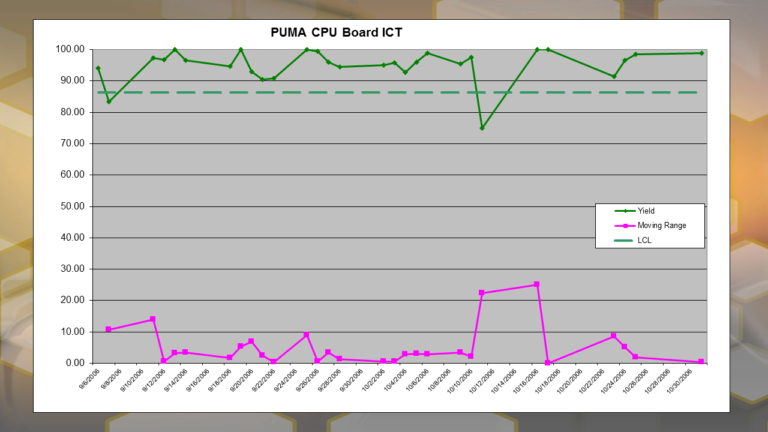Practical Lean Six Sigma
Learn and apply techniques that deliver value to your customers, while dramatically improving your company’s quality, lead time, and financial performance.
Lean Six Sigma is a methodology for conducting business that focuses on delivering value to your customer and, not coincidentally, provides tangible benefits to your own business as well. There are dozens of tools, methods, templates, practices, and processes developed using Lean Six Sigma principles, which can be applied to improve quality, thruput, and business processes. They are particularly useful when applied to engineering, production operations, and quality operations projects. Delivering value is the “Why;” the tools are the “How.”
Let’s briefly define what’s meant by Lean and Six Sigma first. There are whole books on the subjects, condensed here to one paragraph each.
Lean is fundamentally about delivering value through continuous improvement aimed at process flow rate, or thruput. Faster thruput means your customers enjoy shorter lead times and your business enjoys faster cash flow – that’s why we want to do Lean.
As Lean techniques are applied to a process, non-value-adding (NVA) activities are systematically reduced or eliminated. NVA is determined by one simple question: would your customers be willing to pay for this activity? If not, it’s NVA. NVA activities are things like storing work in process (WIP), reworking units because they are defective, process wait time, and excess material in stock. Faster thruput is achieved by eliminating NVA, not by making everyone take shortcuts, work faster, or skip lunch breaks.

Example of a simplified Value Stream Map (VSM), a practical Lean Six Sigma tool, for assembly of a complex electro-mechanical system. A full VSM would show additional data such as operation cycle times, wait times, work-in-process (WIP) quantities, and people assigned to operations.
Similarly, Six Sigma is concerned with delivering value through high quality, and is accomplished by eliminating defects, reducing variation, and controlling processes. A higher level of product quality leads directly to lower cost of goods sold (COGS) and warranty/service costs, benefiting your customers and your own business – that’s why we want to do Six Sigma.
Sigma (σ) is the Greek letter used in statistics to denote standard deviation. For a Six Sigma process, the defect rate is less than 3.4 DPMO (defects per million opportunities). For reference, a 1% defect rate (corresponding to a 99% process yield) equates to 10,000 DPMO. Implementing Lean Six Sigma to drive defect levels far below 1% contributes to greater customer satisfaction and can lead to a substantial cost reduction for your business as well.

Example of a control chart for a circuit board test operation showing daily Yield (green solid), Lower Control Limit (LCL – green dashes), and daily Moving Range (MR – magenta). The LCL is computed based on the Yield and MR.
Then what is Practical Lean Six Sigma?
Practical Lean Six Sigma (PL6s) is my approach to process improvement that emphasizes learning what you need, when you need it. It recognizes that it’s not realistic to expect project team members to learn and master all of the Lean Six Sigma tools and then be able instantly to recognize situations to exercise them.
Most product engineering and manufacturing ops improvement projects will benefit from a few of the tools at one stage or another. As your PL6s project manager or adjunct PM, one of my key roles is to recognize when certain tools are appropriate to a project phase or an unexpected problem, introduce the tools to your project team, and guide them through their use the first time or two, to begin building Lean Six Sigma capability in your organization’s front line practitioners.
Take a look at some of the Practical Lean Six Sigma service offerings designed to meet your business improvement objectives.
Feel free to contact me to discuss how to apply Practical Lean Six Sigma to your business challenges. Email to Dann@Lean6SigmaPM.com
